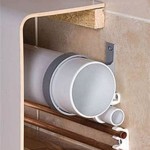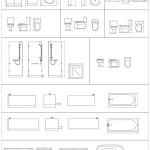How to Redo a Bathroom Shower Wall
Re-doing a bathroom shower wall is a great way to refresh the look of your bathroom and potentially increase its value. Whether you are tired of the current tile, dealing with mildew, or simply want a modern update, this project can be completed with a few simple steps. This guide will provide a step-by-step process to help you achieve a successful shower wall renovation.
Step 1: Prepare the Existing Wall
The first step is to prepare the existing wall. This involves removing any existing tile, grout, and caulk. For tile removal, a hammer and chisel can be used, but be careful not to damage the underlying wall. If you encounter stubborn tile, you may need to use a tile saw or a reciprocating saw with a demolition blade. Be sure to wear eye protection and a dust mask during this process.
Once the tile is removed, you will need to scrape off any remaining grout and caulk. A grout removal tool or a putty knife can be used for this step. After removing the old grout, you may need to use a wire brush to clean the wall. This will remove any loose debris and prepare the surface for the new tile.
Step 2: Install Waterproofing Membrane
After removing the previous tile and thoroughly cleaning the surface, it is essential to install a waterproof membrane. This is a crucial step in preventing water damage and leaks in your shower. There are various waterproofing membranes available, including liquid membrane, sheet membrane, and tile backer board. The type of membrane you choose depends on your project's complexity and your experience level.
Liquid membrane is generally easier to apply and can be used in most situations. Sheet membrane is a more robust option and is ideal for areas with high moisture or high movement. Tile backer board is a rigid board that can be used to create a waterproof barrier behind the tile. It is often used in areas where the wall is uneven or has been damaged.
When installing a waterproofing membrane, it is essential to follow the manufacturer's instructions carefully. Some membranes require a specific priming solution before application, and others may require a specific type of bonding agent. Ensure that the membrane is properly sealed and bonded to the shower wall, creating a waterproof barrier. Additionally, ensure that the membrane is installed in a way that allows for proper drainage, preventing water from pooling behind the tile.
Step 3: Install Tile
After the waterproof membrane is installed, you can begin installing the new tile. Choose a tile that is suitable for bathroom use, as it will need to be resistant to moisture and mildew. Ceramic tile is a popular choice because it is durable, easy to clean, and affordable. However, you can also choose natural stone tiles, glass tiles, or mosaic tiles. These options can add a unique touch to your bathroom and bring a more elegant look to the space.
Before installing the tile, you will need to measure and mark the wall to ensure the tiles are installed correctly. Use a level to ensure the tile is installed straight. You will also need to create a layout for the tile and decide whether to use a running bond, a staggered pattern, or a more complex pattern. Installing the tile requires thin-set mortar, which is a special type of adhesive designed to bond tile to the wall. Apply thin-set mortar to the wall and then press the tile into place.
After installing the tile, you will need to space the tiles evenly, leaving room for the grout. Use tile spacers to ensure that the tiles are evenly spaced. Once the tile is installed, allow the thin-set mortar to cure for the time specified by the manufacturer. This curing time is essential for ensuring that the tile is properly bonded to the wall.
Step 4: Apply Grout
After the thin-set mortar has cured, you can apply the grout. Grout is a mixture of cement and water used to fill the gaps between the tiles. It is available in a variety of colors, allowing you to customize the look of your shower wall. Choose a grout that is compatible with your tile and the waterproof membrane. There are also different types of grout, including epoxy grout and sanded grout, which are specifically designed for bathroom applications.
When applying grout, use a rubber grout float to spread the grout evenly between the tiles. Ensure that the grout is applied evenly and that the gaps between the tiles are filled completely. After applying the grout, you will need to remove any excess grout from the tile surface using a damp sponge. Allow the grout to cure for the time specified by the manufacturer. Once the grout has cured, you can seal the grout to prevent water damage and make it easier to clean.
Step 5: Apply Caulk
The final step in redoing your bathroom shower wall is to apply caulk. Caulk is a sealant used to prevent water from seeping behind the tile and into the wall. Use a high-quality caulk specifically designed for bathrooms and apply it along the edges of the shower wall and around any fixtures. Ensure that the caulk is applied evenly and that it creates a smooth seal. Allow the caulk to cure for the time specified by the manufacturer before using the shower.

Bathroom Remodeling A Step By Guide Budget Dumpster

How To Remodel A Shower On Budget Bathroom Ideas And Inspiration The Tradewinds Imports Blog

How To Diy A Bathroom Wall And Enclose Shower

Bathroom Remodeling A Step By Guide Budget Dumpster
:max_bytes(150000):strip_icc()/ScreenShot2021-07-29at3.52.47PM-05dfb615535741f4b42f96fbed5de1ec-b88761e4404f4f619ef37508b482a0b4.png?strip=all)
52 Stunning Bathroom Remodel Ideas For Every Style

How To Remodel A Tub Shower For Your Bath

Update Your Ceramic Tile Without Replacement With Refinishing By Miracle Method We Ref Bathroom Wall Coverings Cladding Alternative To Tiles

9 Shower Remodel Ideas For A Bathroom

6 Walk In Shower Tile Ideas For Your Bathroom Remodel Dave Fox

Acrylic Wall Systems For Bathroom Remodeling Bath Renew
Related Posts







